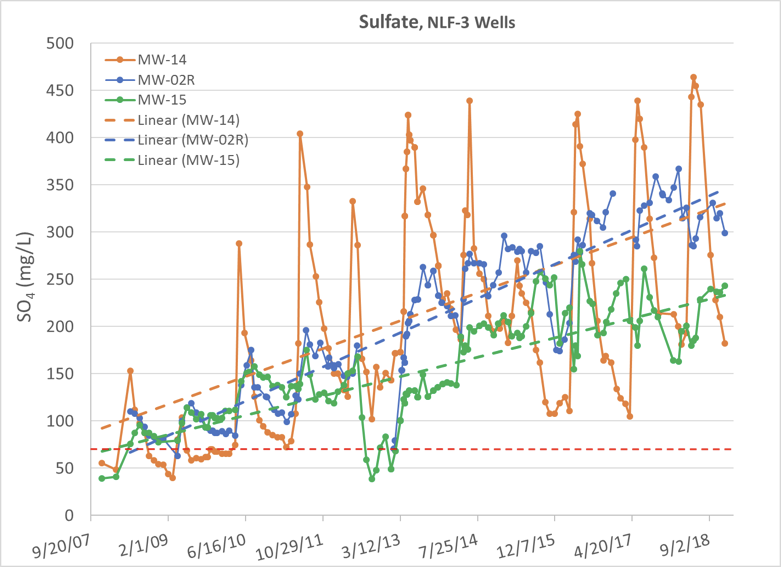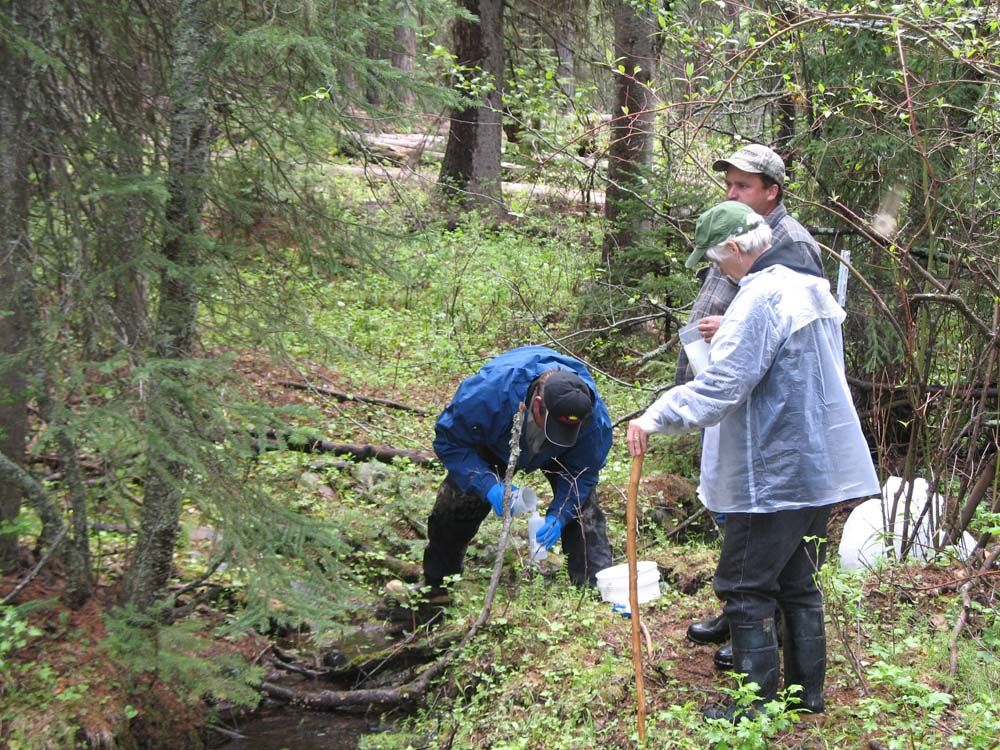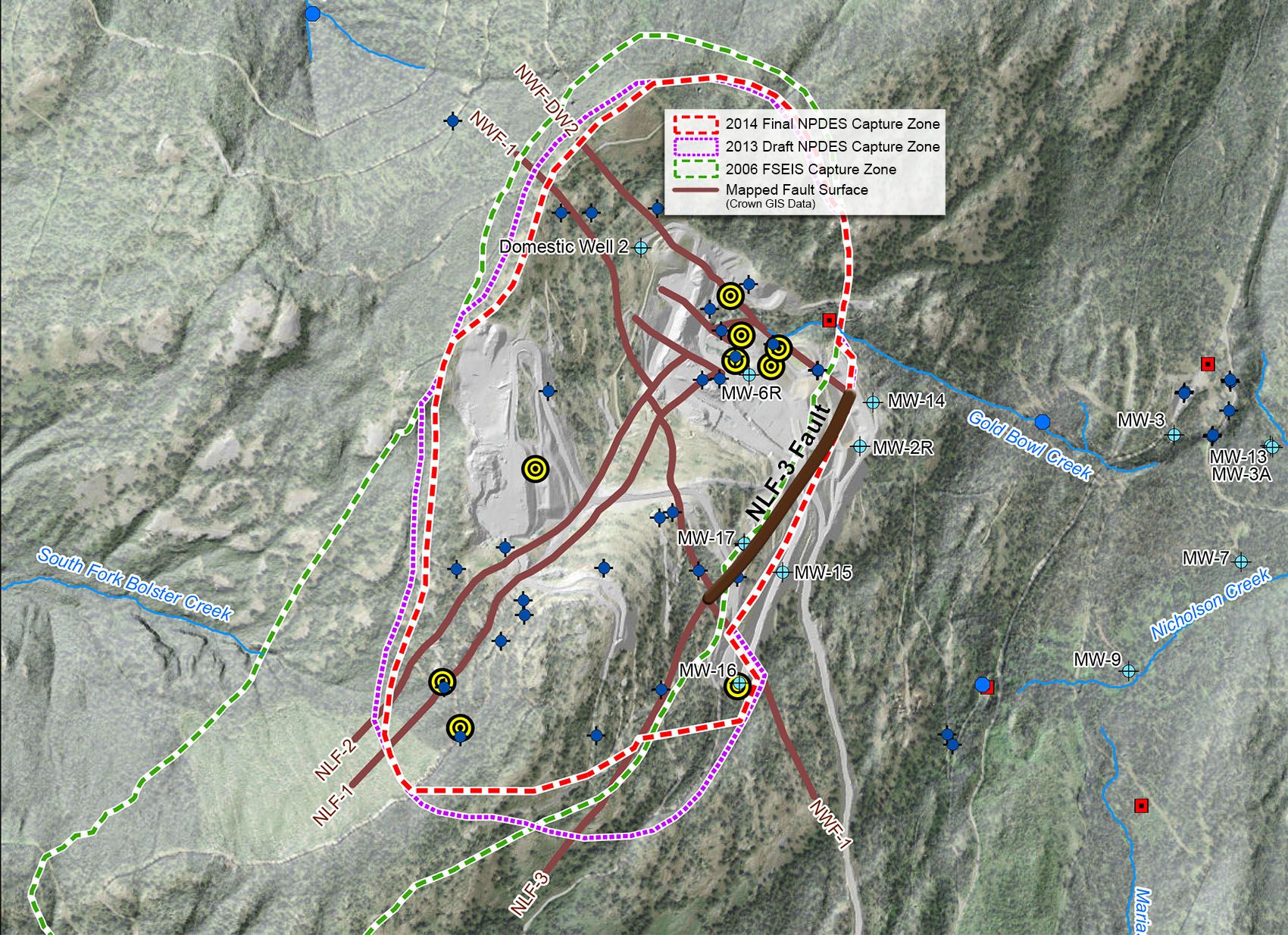Reclamation & Closure
Buckhorn Mine Monitoring
The mine closed in July of 2017, after exhausting the gold ore found in Buckhorn Mountain. The mining company finished putting all construction fill and development rock in the mine shafts, demolished most of the buildings, cemented shut the mine adits, and recontoured and seeded the mine surface by the fall of 2018.
An approvable Hydrologic Closure Plan (Closure Plan) was required 30 days before mining would be completed; however, it took Crown/Kinross almost a year after the mine closed to provide a plan that the Department of Ecology (Ecology) could approve. By then, surface reclamation was almost complete. Even though Ecology issued an approval for the Closure Plan in May 2018, it lacks the details needed to ensure that the mining company will return water quality to pre-mining condition.

The Gold Bowl portal is sealed off after almost a decade of mining.
Reclamation:
Before a mine is permitted, the company must develop a plan for reclaiming the surface after mining stops. Crown/Kinross has a Hydrologic Monitoring Plan (HMP) that defines reclamation and what activities it will include. Surface reclamation is intended to occur over a one-year period following the end of mining. The HMP assumes that there would be two years of post-reclamation monitoring. Hydrologic reclamation refers to groundwater equilibrium and will continue until water quality is maintained at pre-mining levels for at least ten years.
At the Buckhorn Mine as of November 2019, surface reclamation has been completed; most of the buildings have been removed, and the ground surface had been recontoured and seeded. However, compliance monitoring groundwater wells have still been high in sulfates and other contaminants, in violation of the mine’s water quality permit. During the mine planning process, it was not anticipated that the mine would be unable to contain and control mine contamination within the permitted boundary or capture zone. While the surface of the mine looks much more natural again, contaminants continue to escape from the mine underground.
Closure:
Closure is described as the period of time from the end of reclamation until the water treatment system is no longer required. Ecology’s letter approving the Closure Plan states that the agency expects it will take five spring runoffs (freshets) after dewatering and treatment has been shut down to measure the success in reaching the site’s natural hydrologic function. During those five years, functional water treatment and recirculation facilities will remain onsite. The plan fails to provide a definition of “natural hydrologic function,” water quality requirements, or what happens if water quality declines.
Post Closure is not firmly defined, but it consists of a monitoring period of ten or more years following closure to see if there are any water quality impacts remaining from the mine. The Closure Plan is silent on what happens to the timeline if water quality declines. The 2006 Environmental Impact Statement for the mine recognizes that it may be necessary to mitigate the impacts to groundwater quality for decades. Continuous water quality violations throughout the ten-year life of the mine underscore and actualize concern over these predicted impacts.
See Buckhorn Mine Plans/ Hydrologic Closure Plan for more details
Surface Remediation Well Underway, Fall 2018
Kinross began removing construction fill from the surface of the mine site and putting it underground even before they finished mining, but that has not reduced the pollution problem. Once mining was complete in 2017, Kinross rapidly began moving the rest of the construction fill into the underground mine shafts; even the fill that was under the treatment facility was moved. To do this, they dismantled the facility without authorization, leaving the mine site without a working treatment facility for a period of six months.
At this point, most of the buildings have been removed and the ground surface has been recontoured and seeded. On the surface, things are looking more natural. However, downgradient wells are still high in sulfates and other contaminants.
Waste Rock
Change Over Time: Mine Portals
Upper Portal
Gold Bowl Portal

Water Quality
Contamination from the Buckhorn Mine has been impacting ground and surface water since mining began.

Discharge Permit
The discharge permit requires the mining company to make the water almost as clean as it was before mining.

Plans
The Buckhorn Mine management plans are needed to provide oversight and remediation of the ongoing water quality issues.